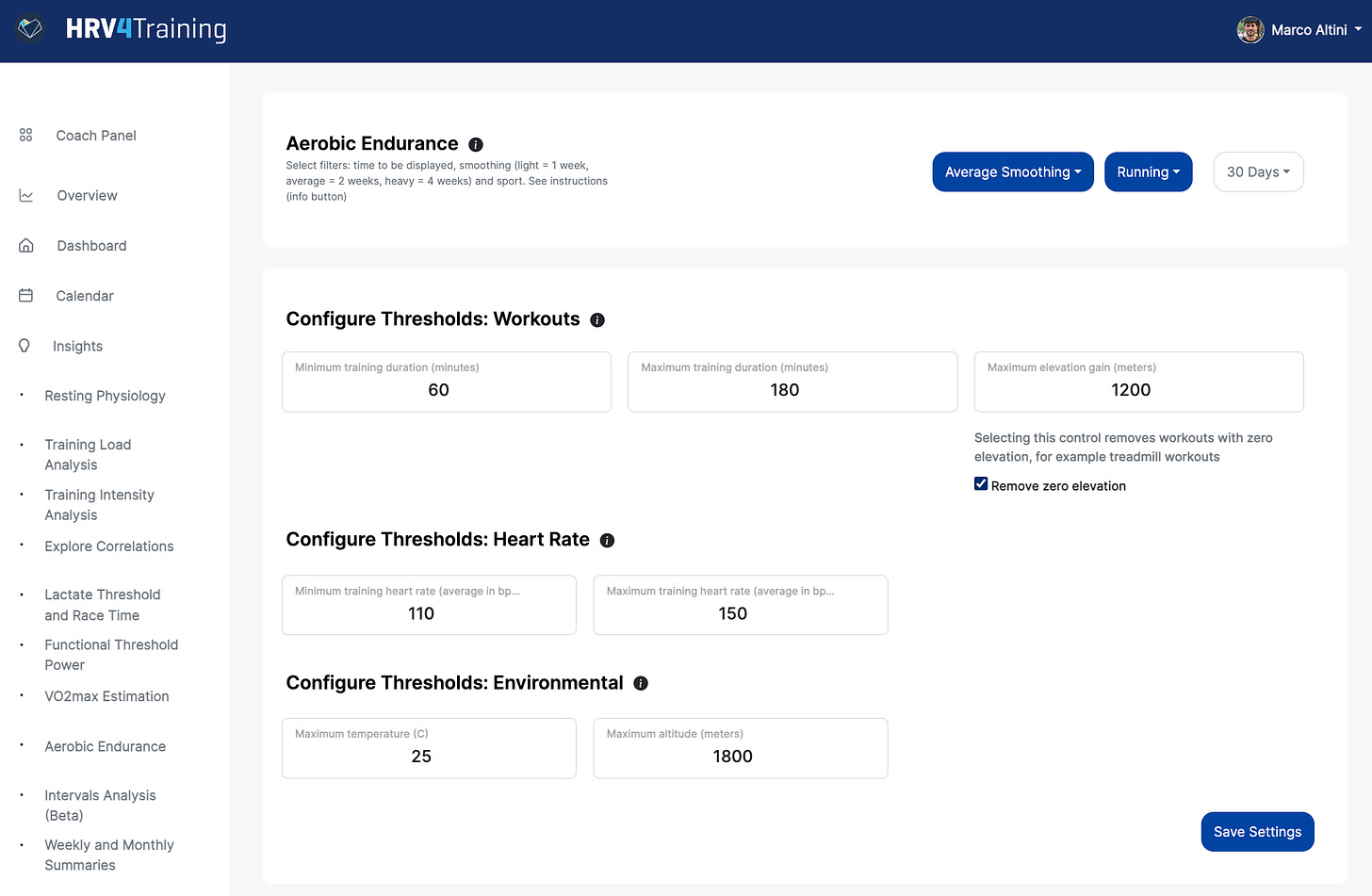HRV4Training Pro: aerobic efficiency update
You can now remove zero elevation runs (e.g. treadmill runs)
We’ve just released an improvement in the aerobic efficiency feature in HRV4Training Pro (which you can try here, if you use our app already).
In particular, we added a new control in the aerobic efficiency analysis in HRV4Training Pro, to let you filter out workouts with zero elevation gain reported, which is typical of treadmill workouts.
Larn more, below.
What's aerobic efficiency again?
Aerobic efficiency relates to your ability to sustain a given workload. Good endurance athletes tend to have high aerobic endurance, meaning that they can sustain a relatively high workload (for example pace or power), at a relatively low effort (typically measured in terms of heart rate).
To determine your aerobic efficiency we compute the relation between output (pace or power) and input (heart rate). Intuitively, a lower heart rate for the same output (pace or power), when consistently shown over periods of weeks, translates into better aerobic efficiency.
Similarly, a higher power or faster pace at the same heart rate is linked to improved aerobic efficiency. By analyzing the relationship between input and output for running or cycling activities, you can easily track aerobic efficiency changes over time, as you progress with your training.
You can do so in HRV4Training Pro, under Insights / Aerobic endurance.
How can you use this feature?
The aerobic efficiency feature in HRV4Training Pro can help you better understand if your training is progressing well, without the need for specific testing. As you go for example from the off-season to your base (or other) training phase, you should see your aerobic efficiency improve as your pace gets a bit quicker at a given heart rate for example.
Similarly, you could use aerobic efficiency to capture your response to environmental factors such as a training camp at altitude. During my research, I have used exactly this principle for example to determine which athletes have or have not adapted to a training camp at altitude, based on their aerobic efficiency getting back to pre-camp values, or failing to do so (you can learn more here).
Running on a treadmill
Running on a treadmill is different from running outside. Forces are reduced, ventilation is most likely poor, your stride might be a bit shorter, etc.
Additionally, the hardware and software we use to track treadmill workouts and upload them to Strava or TrainingPeaks might estimate our pace with a certain degree of error. As a result, the relationship between heart rate and pace differs from outdoor running, to a point that it can create artifacts in our aerobic efficiency analysis.
For these reasons, we added a new control in the aerobic efficiency analysis in HRV4Training Pro, to let you filter out workouts with zero elevation gain reported, which is typical of treadmill workouts.
I hope you will find this update useful, thank you for your support.
Marco holds a PhD cum laude in applied machine learning, a M.Sc. cum laude in computer science engineering, and a M.Sc. cum laude in human movement sciences and high-performance coaching.
He has published more than 50 papers and patents at the intersection between physiology, health, technology, and human performance.
He is co-founder of HRV4Training, advisor at Oura, guest lecturer at VU Amsterdam, and editor for IEEE Pervasive Computing Magazine. He loves running.
Social:
Twitter: @altini_marco.
Personal Substack.






